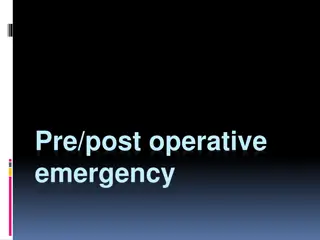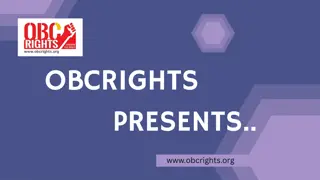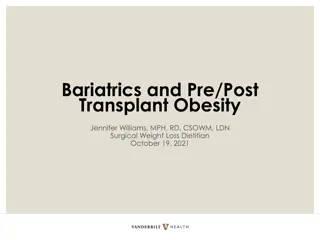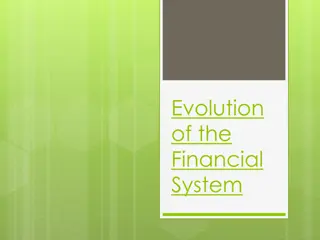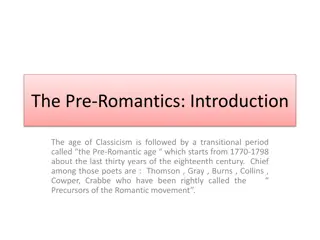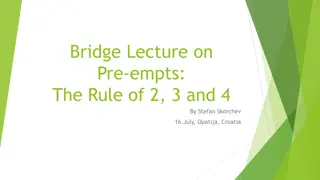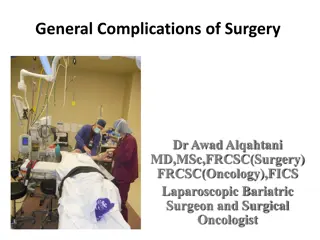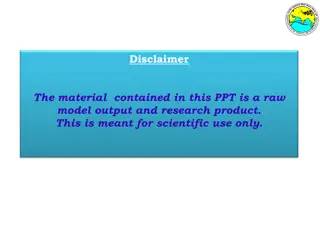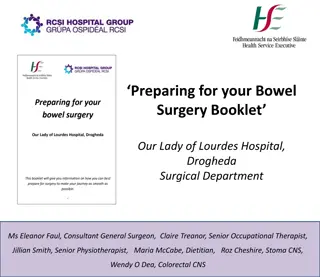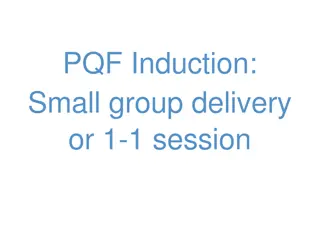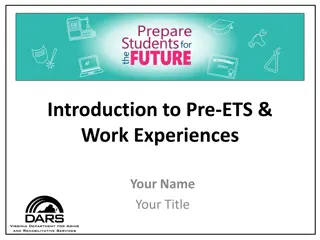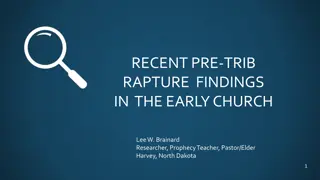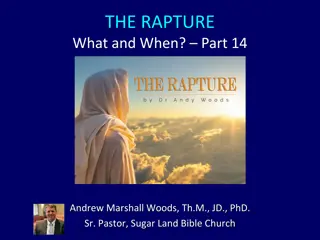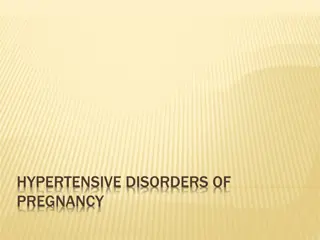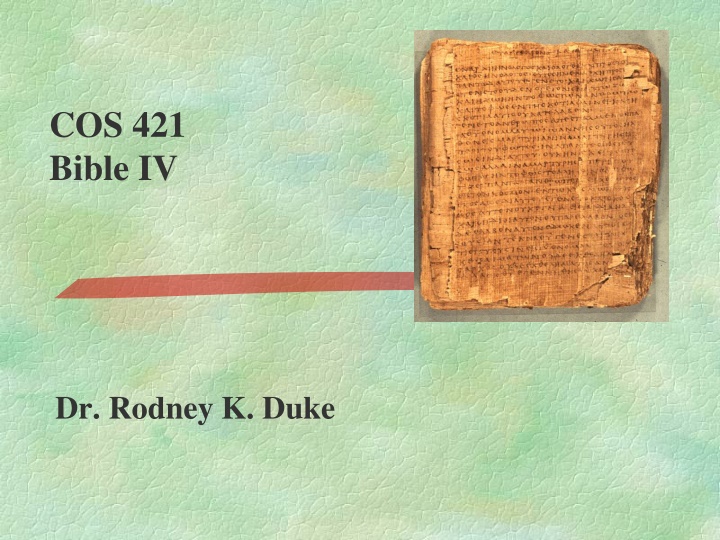
Canon of Hebrew Scriptures and Literary Approaches
Learn about the structure of the Hebrew Bible, including the Canon of the Old Testament and the various forms of biblical literature. Explore the significance of Torah, Prophets, and Writings, and delve into the history and origins of these texts. Gain insights into interpreting and exegeting biblical literature for preaching and pastoral responsibilities.
Download Presentation

Please find below an Image/Link to download the presentation.
The content on the website is provided AS IS for your information and personal use only. It may not be sold, licensed, or shared on other websites without obtaining consent from the author. If you encounter any issues during the download, it is possible that the publisher has removed the file from their server.
You are allowed to download the files provided on this website for personal or commercial use, subject to the condition that they are used lawfully. All files are the property of their respective owners.
The content on the website is provided AS IS for your information and personal use only. It may not be sold, licensed, or shared on other websites without obtaining consent from the author.
E N D
Presentation Transcript
COS 421 Bible IV Dr. Rodney K. Duke
DAY 1 Assign: (see handout, Weekday Assignments ) 1) Daily: Write in a journal entry (1-2 paragraphs) 2) #1 Wisdom subtypes in Proverbs 3) #2 Analyze the two-line relationships in Pro 20:1-15 4) #3 Apply Reading Strategy to Pro 26:17; 13:14; 25:27 5) #4 Reflect on the form and intention of Gen 1:1-2:3 6) Review course assign, Section A. # s 5-9, Section B. #3 for discussion. Day Objectives: 1) Explain the course goals and objectives. 2) Identify the structure and content of the Hebrew Bible. 3) Explain the process of successful communication and identify how you should approach interpreting the Bible. 4) Explain how to read the two-line proverb.
QUICK NITTY GRITTY OVERVIEW Class pace: fairly fast and intense Work load: moderately heavy; budget 2 hours for reading and writing preparation required for next class Literary approach: communication model. This is not anything goes, opinion vs. opinion. We will seek to uncover what the texts meant to their original audiences. #1 Rule: be willing to be wrong and make mistakes, then we can all loosen up, learn from each other, and have fun learning
COS 421 Bible IV: Prophets, Psalms, and Wisdom Literature Overview Students will be able to: 1. Understand the origin, history, and use of these forms of biblical literature among God s people. 2. Exegete these forms of biblical literature. 3. Apply exegesis to preaching, other pastoral responsibilities, and issues of the present day.
THE CANON OF THE OLD TESTAMENT The Books of The Law (Torah) The Books of The Prophets (Nebhi im) The Books of the Writings (Kethubim) The Books of The Apocrypha (Roman Cath. Canon) Former Prophets *Joshua *Judges *1 Samuel *2 Samuel *1 Kings *2Kings Genesis Exodus Leviticus Numbers Deuteronomy Psalms Job Proverbs *Ruth Song of Songs Ecclesiastes #Lamentations *Esther #Daniel *Ezra-Nehemiah *1 Chronicles *2 Chronicles Tobith Judith Wisdom of Solomon Ecclesiasticus Baruch 1 Maccabees 2 Maccabees Additions to Esther Additions to Daniel Latter Prophets Isaiah Jeremiah Ezekiel # > The Book of the Twelve Apocrypha (East. Orthodox) Same as above, Less the Book of Baruch * = Historical books in the Christian Canon # = Included with Prophets in Christian Canon
STRUCTURE OF HEBREW CANON (1of 3) Law/Torah/Pentateuch 1. Traditional Domain: priests (preserved ritual laws, in late period taught Torah) 2. Literary Forms: historical narratives and laws 3. Functions: to provides Israelite foundations for: a. world-view (nature of God, world, humanity) b. origin and purpose of Israel (covenant with God) c. conduct (ritual, moral, social, criminal laws, etc.)
STRUCTURE OF HEBREW CANON (2 of 3) Prophets 1. Traditional Domain: prophets "Former Prophets": key characters in course of Israelite history, believed to have kept records "Latter Prophets": main characters and their messages 2. Literary Forms: "Former Prophets": broad-sweeping historical narratives "Latter Prophets": narratives focused on individuals; oral, poetic messages 3. Functions: "Former Prophets": a. preserve the traditions of Israel, b. answer questions about the course their history took, evaluating their kings and nation c. teach about the nature of reality "Latter Prophets": hold people accountable to faith priorities (different emphases with each prophet)
STRUCTURE OF HEBREW CANON (3 of 3) Writings 1. Traditional Domain: varied, but wisdom literature associated with the sage (collected knowledge, wisdom) 2. Literary Forms: (varied) wisdom literature, hymnic lit., historical narrative, story 3. Functions: (varied) a. wisdom: teach about the nature of life and how to live skillfully b. hymnic: guidance and encouragement in expressions of prayer, worship and celebration c. narrative: (same as under "Former Prophets")
Israelite Functionaries and Institutions King: monarchy, national identity, term "messiah," Davidic dynasty NT: David lineage, Messiah, messianic & political expectation of Jesus day Priest: cult, holiness symbol system, sacrificial system, Temple, the Law NT: sacrificial imagery, Jesus as High Priest and atoning sacrifice, Sadducees, Christians as a royal priesthood Prophet: (unlike Ancient Near East: court/temple/shrine) independent "preacher"/ activist / demonstrator /conscience of the people (NT: John the B, Jesus, apostles, prophets, pastors, etc.) Sage: court (school?) scribe (palace & temple); Joseph, Daniel NT: wisdom forms of Jesus' teaching, Pharisees, scribes and rabbis. NT assumes knowledge of these roles and institutions.
COMPONENTS OF THE BIBLICAL TEXTS Oral Stage: Documents: Author/ Community Authors .. ... .. Editor Text Audience Text Criticism Reader-response Criticism Source Criticism Form Criticism Redaction Criticism Literary Criticism (narrow) Historical Reconstruction History of the Text Literary Criticism (Broad)
Sample questions that can be asked about the Bible 1) How can this text be used to reconstruct the history of the ? (historical criticism) 2) What does the audience bring to the reading of a text that influences their conclusions about what it means? (reader-response criticism) 3) What was the psychological makeup of the author? (psychological criticism) 4) What impact did the original author wish to have on the original audience? (literary/rhetorical criticism) 5) Did the author/editor use documentary source to help compose the final text? (source criticism) 6) How did the author/editor use the sources to shape the final text? [redaction (=to edit) criticism] 7) Was the text, or sections of it, given form by use in an oral setting? (form criticism)
Genre Recognition Failure to employ a reading strategy that recognizes the types/genres of literature in the Bible and their original functions: 1. Obscures the variety of forms employed in the Bible and makes communication MORE difficult. (People employ different genres to AID communication.) 2. Locates the meaning of the text in the hands of the reader (leading to unintended applications) rather than locating the meaning in the author s intention. 3. Promotes private and self-centered readings of the Bible ( God speaks to ME ), rather than an informed and communally guided interpretation. 4. (Illustration: favorite cake) Often leads to an atomizing of the text. The form and function of the biblical text should influence the form and function of the sermon.

